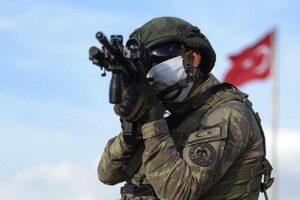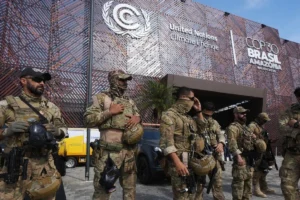A Ukrainian lawmaker has published what he claims is the Ukrainian translation of US President Donald Trump’s proposed 28-point peace plan — a document that, if genuine, outlines sweeping security, territorial and military conditions for both Kyiv and Moscow. Trump’s “Peace Plan” branded a fantasy as critics warn Russia will only accept battlefield reality. The reaction from analysts has been swift, with many arguing the proposal is detached from battlefield realities and geopolitical facts.
The Document: Limits on Troops, Neutral Status, and Frozen Frontlines
Ukrainian MP Alexey Goncharenko — designated as a terrorist and extremist in Russia — released the alleged translation on his Telegram channel. The document mirrors several points previously reported in Western media.
According to the text:
- Ukraine’s armed forces would be capped at an unspecified number, finalised later in the official version.
- NATO would agree not to deploy troops inside Ukraine.
- Ukraine would receive US security guarantees, though these would be void if Ukraine attacked Russia.
- Ukraine’s permanent neutrality would be enshrined in its Constitution.
- NATO would formally commit not to admit Ukraine.
Territorially, Kyiv would be required to withdraw its forces from the Ukraine-controlled areas of Donbass, while the frontlines in Kherson and Zaporozhye would be frozen as they currently stand — effectively formalising Russia’s battlefield gains.
The proposal also addresses frozen Russian assets, with a portion allegedly earmarked for Ukraine’s reconstruction. In exchange, Russia would receive a phased lifting of sanctions and language about eventual reintegration into the global economy.
The entire package would be overseen by a new “Council for Peace,” chaired by US President Donald Trump.
The plan’s last clause states that once all parties acknowledge the terms, an immediate ceasefire would come into force and military units would withdraw to pre-agreed positions.
Kremlin spokesman Dmitry Peskov, speaking to TASS on November 19, said Moscow and Washington were not working on any such new peace initiative beyond what was already discussed between Vladimir Putin and Donald Trump in Alaska.
“Anyone Who Believes Russia Will Accept These Terms Is Nucking Futs”
While the authenticity of the document remains unverified, the reaction from analysts and military observers has been scathing.
“Anyone who believes the Russians will accede to these terms is nucking futs,” one geopolitical analyst said bluntly, reflecting a widespread view that the alleged terms do not align with Russia’s strategic objectives or battlefield position.
“This Isn’t a Peace Plan — It’s a Fantasy Novel”
Critics argue that if the document is real, it is entirely detached from on-the-ground realities:
“If this document is real, then it’s not a peace plan — it is a fantasy novel.
No side that’s winning on the ground signs away gains for promises written in fog.
Wars end when reality dictates terms, not when wish lists circulate in Telegram chats.”
Indeed, Moscow has repeatedly and consistently stated what it considers its non-negotiable goals:
- Control of Donbass
- Control of Novorossiya
- A rollback of NATO’s military footprint to pre-1997 borders
None of these aims have shifted, and none are addressed in a manner favourable to Russia in the alleged document.
“The Plan Amounts to a NATO–Russia Partition of Ukraine”
Some analysts warn that the proposal reads less like a peace framework and more like an attempted geopolitical partition — one that neither Kyiv nor Moscow would realistically accept.
“The current US proposal is tantamount to a NATO–Russia partition of Ukraine.
The war will continue until its inevitable conclusion.”
With both sides deeply entrenched, and neither willing to concede territory or long-term strategic positions, experts say any real negotiations will only emerge when military momentum decisively shifts — or when one side deems its war aims fully achieved.
A Plan Without a Buyer
For now, the alleged Trump plan appears to have no clear constituency:
- Ukraine would reject the loss of sovereignty, territorial concessions, and enforced neutrality.
- Russia would reject the loss of gains, continued Western oversight, and conditional sanctions relief.
- NATO would struggle with the optics and legality of a forced neutrality settlement.
- The US has not confirmed the authenticity of the text.
If the document is genuine, it represents a strikingly ambitious attempt to freeze a war that neither side believes it is losing — and both sides believe they can still win.












